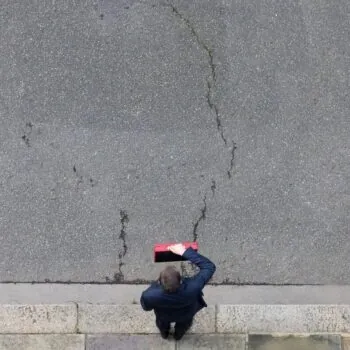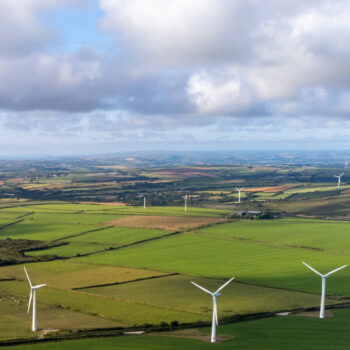Unlocking far greater energy efficiency investment is the real test for whether InvestEU, and the wider EU budget, can deliver clean growth and climate targets. By Pedro Guertler and Tom Jess
As the European Commission publishes its second tranche of legislative proposals for the next Multiannual Financial Framework (MFF) – the EU’s next budget covering 2021-2027 – people with an interest in EU climate leadership will be paying close attention to the proposals for ‘InvestEU’. As the EU’s main instrument to leverage private investment, InvestEU has considerable potential to lead investment towards net zero greenhouse gas emissions and climate resilience, consistent with the Paris agreement, by 2050 at the latest.
InvestEU is the new programme that will replace the European Fund for Strategic Investments (EFSI). With a proposed budget of €15.2bn and its InvestEU Assistance facility, it will seek to drive €650bn investment over the budget period in four so-called windows: sustainable infrastructure, research and innovation, human capital and SMEs.
The ability InvestEU to drive sustainable infrastructure investment will be an important indicator of the overall EU budget’s potential to have a positive impact on boosting low carbon and climate-resilient infrastructure.
Energy efficiency is a critical part of this infrastructure, delivering EU added value on strategic affordability, security and emissions reduction objectives while yielding additional benefits through jobs, productivity and improved health. At the same time, it faces the largest investment gap for decarbonisation: €120bn short of €180bn needed annually to 2040.
The gap is due to multiple barriers: split incentives for energy efficiency investment between building owners and users who pay for energy; uncertainty around the exact energy savings and the challenge to account for additional benefits; high upfront capital requirements; and the often small-scale nature of energy efficiency projects, constraining the availability and affordability of project finance.
EFSI has made some progress, but has still supported fossil infrastructure and needs to go much further on energy efficiency while increasing the overall share of low carbon investments in its portfolio. E3G analysis of the EFSI project list shows that high carbon projects have received 13% of total investment to date. While low carbon projects receive 30% of EFSI funding, this is not sufficient to address the clean energy investment gap. Energy efficiency, which has largest investment need, only receives 9% of EFSI funding.
Of the energy efficiency investments made, the focus has been positive with the majority to energy efficiency in buildings and smart metering, yet the geographical distribution of these investments has been almost exclusively focused in Northern Europe – 85% of energy efficiency investments have been in France, the UK, Finland and Germany. This imbalance is striking, completely omitting Member States where energy saving potentials are highest and private investment is sparse, such as CEE countries.

Source: http://www.eib.org/efsi/index.htm – analysis includes all signed and approved projects in the infrastructure & innovation window of EFSI up to 15th May 2018, not including 45 projects which do not disclosure EFSI finance
InvestEU can bear down more effectively on the energy efficiency investment gap by driving sustainable infrastructure investments that are:
Scalable: Investments should focus accelerating the development of growing markets, such as for energy efficiency, rather than subsidising sectors in structural decline. Emerging skills and technologies are enabling better measurement and verification of energy savings. InvestEU Assistance should support regions and cities – particularly in CEE countries to further redress EFSI’s geographical imbalances and where energy saving potentials are highest – in leveraging such capability to aggregate multiple smaller energy efficiency projects to build a larger and more financeable project pipeline.
Productive: Investments need to focus on projects with the highest leverage potential and market growth opportunities. Energy efficiency projects can deliver both where they harness the significant development capital and innovation potential already present in the construction, repair, maintenance and improvement sectors. This is critical to Europe’s competitiveness – by improving these industries’ productivity as well as the energy productivity of more energy efficient businesses – and new jobs.
Additional: Underinvested sectors facing well-understood market failures or sub-optimal outcomes – such as the energy efficiency sector – should be at the top of InvestEU’s list. More strongly applying the ‘additionality’ principle means that InvestEU should prioritise riskier, high-value investment that would not otherwise be funded either under the European Investment Bank’s normal activity or through the private sector.
Climate-resilient: The Commission’s Joint Research Centre estimates that the costs from climate impacts on critical infrastructure could triple by the 2020s and multiply six-fold by 2050. Therefore, all investments must pass rigorous climate risk stress-tests before they can be granted InvestEU support. High quality energy efficiency projects – particularly in buildings – enhance resilience against heatwaves and cold-snaps, and can incorporate other resilience measures such as green roofs to reduce flash-flooding risks.
By focusing on these characteristics and unlocking greater energy efficiency investment, InvestEU can stretch its resources further, hitting more of its investment ‘windows’. Innovation in new equipment, materials, measurement technologies and business models are key to the scalability of efficiency investment. Closing the energy efficiency investment gap means millions more skilled jobs across the EU. And SMEs dominate the sector.
If InvestEU has the ability to deliver on energy efficiency written into its DNA by focusing the more numerous, smaller-scale and consumer-centric investments required, it becomes better-positioned to deliver investment in other parts of the clean energy system the EU needs – demand-side management, smart grids, decentralised renewables, decarbonised heat and transport.
InvestEU will set the benchmark for the infrastructure investments the EU will pursue through the wider MFF. Passing the energy efficiency test can help ensure that the MFF genuinely helps, without hindering, the EU’s meeting of its Paris climate commitments.


